First off, kudos for trying a combination that is rarely tested by accessibility professionals. Using mouse tracking with a screen reader is certainly a combination that some users require but it's not often tested.
I think you found this NVDA bug - https://github.com/nvaccess/nvda/issues/12047
Your original code and @graham's code both work with JAWS on Firefox, Chrome, and Edge. I hear "edit e-mail" when I hover the mouse over the button. You have to enable mouse echo in JAWS to hear the text under the mouse hover because mouse echo is not on by default.

However, with NVDA, it only works on Firefox. Both Chrome and Edge don't read the "edit e-mail" text with mouse hover. (Edge is based on the chromium engine so it makes sense that if Chrome doesn't work, Edge won't work either. The NVDA bug mentioned at the top also says it doesn't work in Edge).
By default, NVDA has mouse tracking on. You can toggle it with Ins+M or go into Settings and toggle the "Enable mouse tracking" checkbox.

The accessibility properties of the "edit e-mail" button are correct on Chrome.

Notice the "Name" (which is the accessible name) is "edit e-mail" and comes from "Contents". The accessible name should be read when the element receives focus. As you noted originally, it works fine with TAB but not with mouse hover.
So if the accessibility properties look correct in Chrome and JAWS works correctly with Chrome by announcing "edit e-mail" when you hover with the mouse, why doesn't NVDA read the text? NVDA certainly has access to the accessible name. NVDA reads the accessible name just fine in Firefox. So why does NVDA work on Firefox but not Chrome? I'm not sure (sorry). Potentially Chrome is not surfacing some information that NVDA needs, although JAWS works perfectly fine without this other information, which is why I think this is an NVDA bug.
So now you have to decide if you want to code around the NVDA bug. Sometimes that can lead to very messy code that potentially causes other problems. My recommendation is to use the code you currently have, since it's coded properly, and update the aforementioned NVDA bug.


